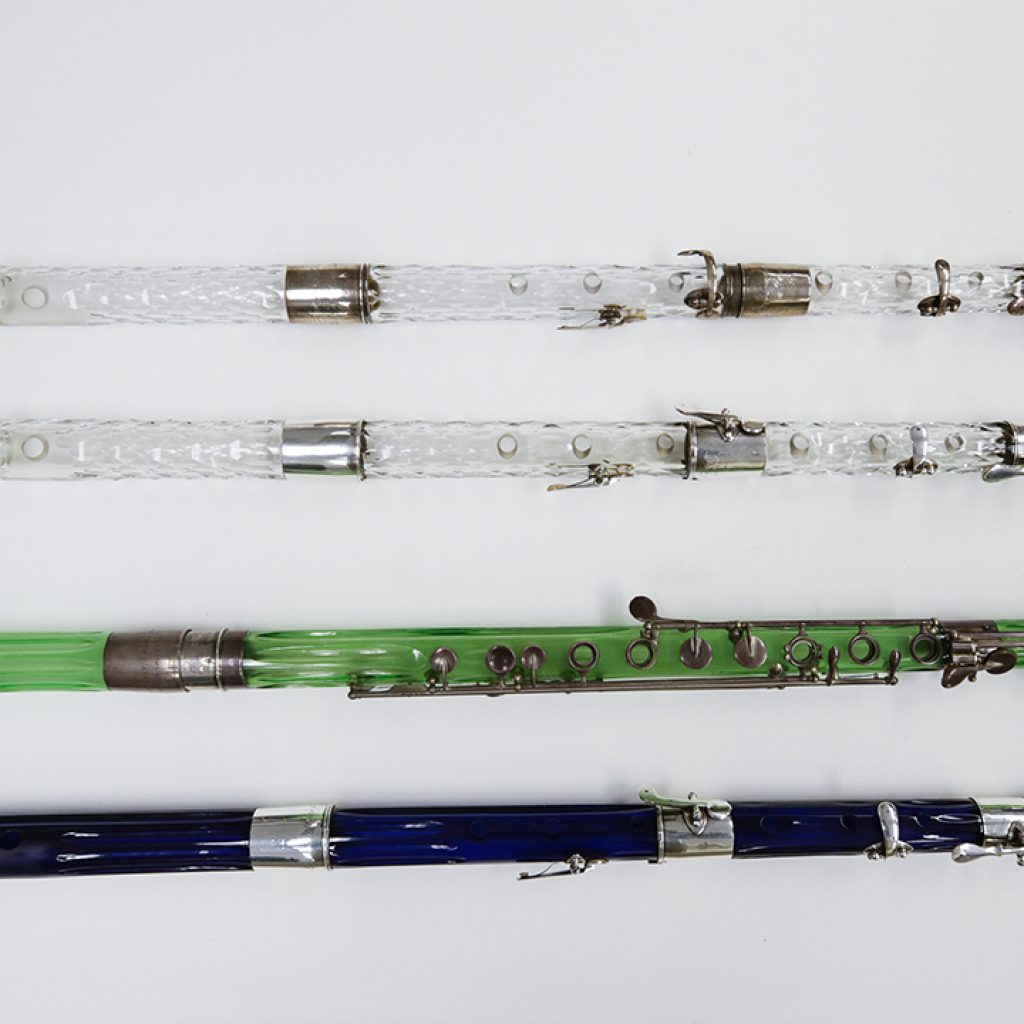The history of crystal flutes is a fascinating journey that weaves together the ethereal beauty of crystal and the musical artistry of flutes. Unlike their traditional counterparts, crystal flutes are a relatively modern innovation, yet they encapsulate a blend of precision craftsmanship, artistic expression, and a desire to explore new frontiers in sound.

Emergence of Crystal Flutes: The concept of using crystal for musical instruments gained traction in the 20th century. With advancements in technology and a desire for experimentation, artisans and instrument makers began crafting flutes from crystal. The transparent nature of crystal not only added a visual allure but also promised unique tonal qualities.
Artisan Craftsmanship: Crafting crystal flutes requires meticulous precision and a deep understanding of both crystal properties and flute dynamics. Artisans select high-quality crystal, often quartz or glass, and shape it into the intricate design of a flute. The transparency of crystal allows for a visual appreciation of the instrument’s inner workings, creating a harmonious union of form and function.
Tonal Brilliance: Crystal flutes are celebrated for their distinct tonal qualities. The crystalline structure of the material contributes to a bright and clear sound that resonates with a unique brilliance. Musicians and audiences alike are captivated by the pure and shimmering tones produced by crystal flutes, adding a touch of magic to musical performances.
Versatility in Genres: While crystal flutes have found their place in classical music, they are remarkably versatile and have been embraced in various genres. From ambient and new age music to contemporary compositions, crystal flutes bring a modern and celestial quality to musical expressions. Their ability to produce a wide range of pitches allows for diverse musical exploration.
Visual Appeal and Stage Presence: Beyond their sonic qualities, crystal flutes possess a visual allure that enhances their stage presence. The transparent nature of the crystal allows the audience to witness the airflow and finger movements of the flutist, creating a captivating visual experience that complements the auditory delight.
Contemporary Innovation: In the contemporary musical landscape, crystal flutes continue to be a symbol of innovation and experimentation. Some artisans explore incorporating gemstones or unique crystal formations into the design, further pushing the boundaries of what is possible with crystal as a musical medium.
Connection to Healing Practices: The transparent and resonant nature of crystal flutes has also led to their association with healing practices. In holistic wellness and sound therapy, crystal flutes are used to create therapeutic sonic landscapes, harnessing the vibrational qualities of crystal for emotional and spiritual well-being.
Collectors’ Items: The rarity and artistry involved in crafting crystal flutes make them coveted collectors’ items. Beyond their musical utility, crystal flutes often hold aesthetic and symbolic value, appealing to those who appreciate the marriage of craftsmanship, innovation, and the inherent beauty of crystal.